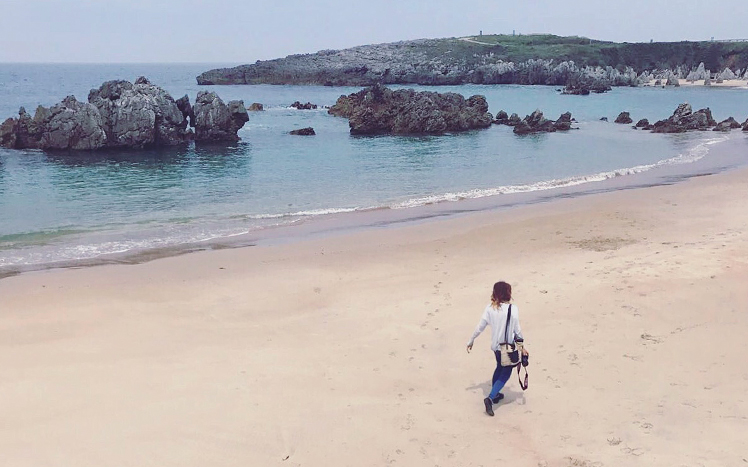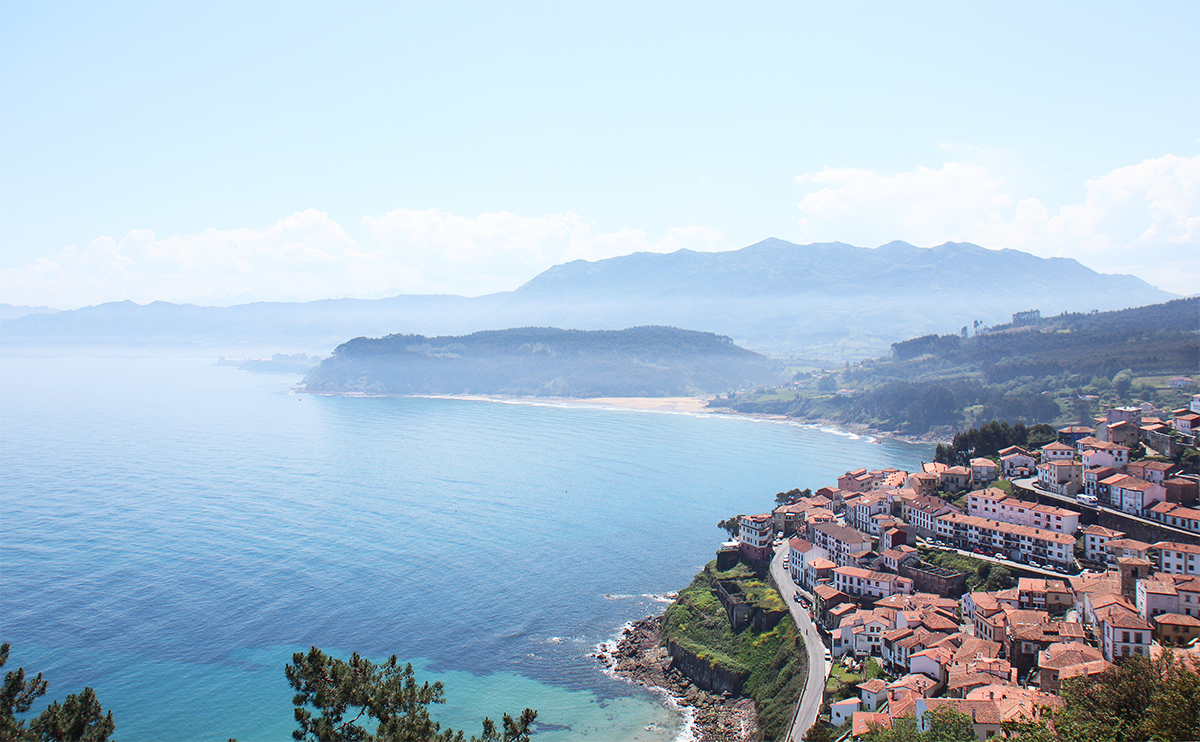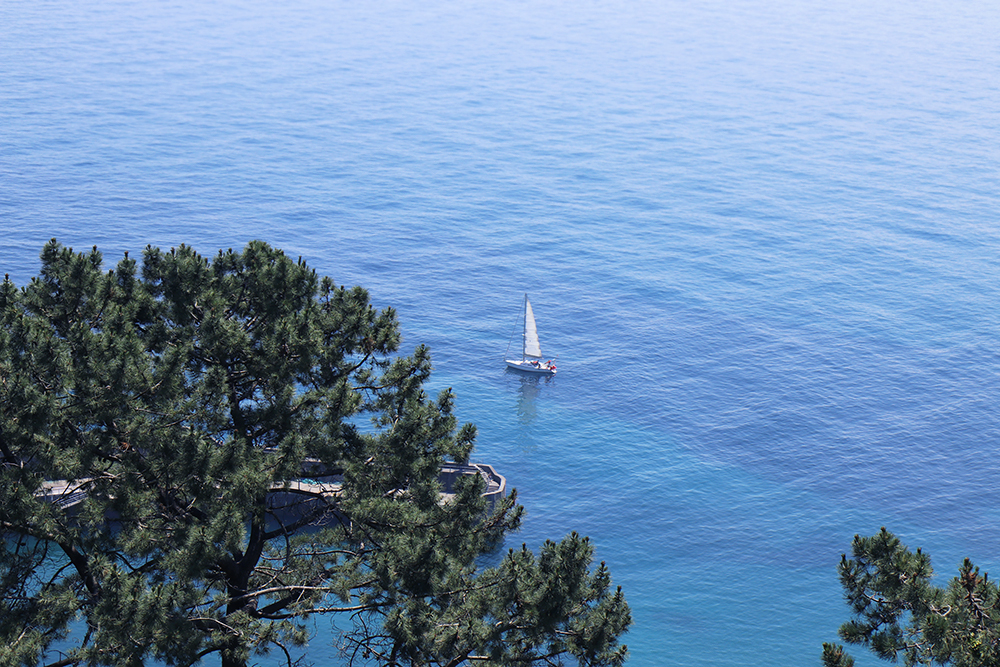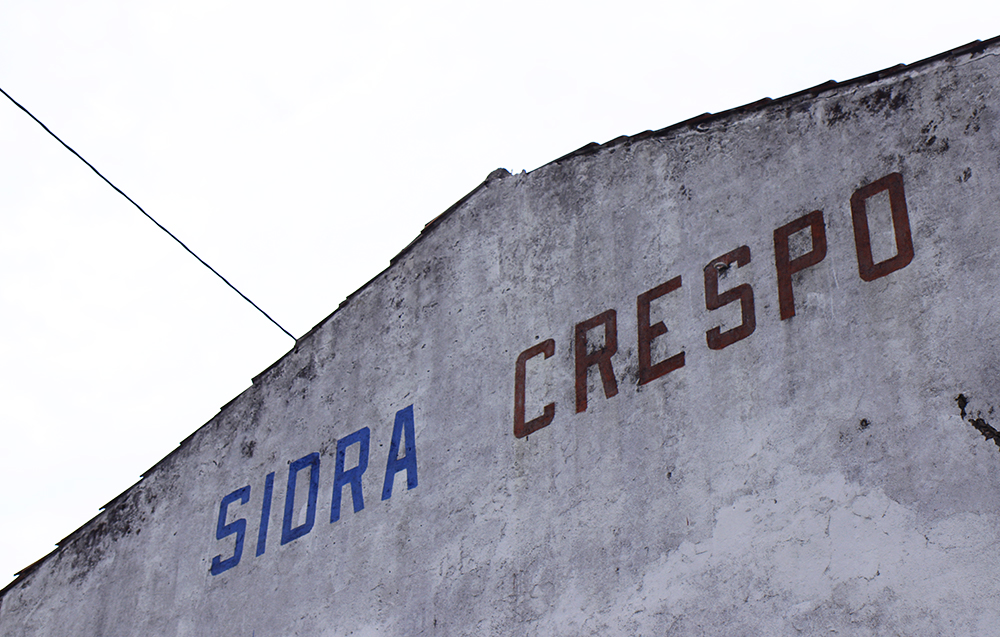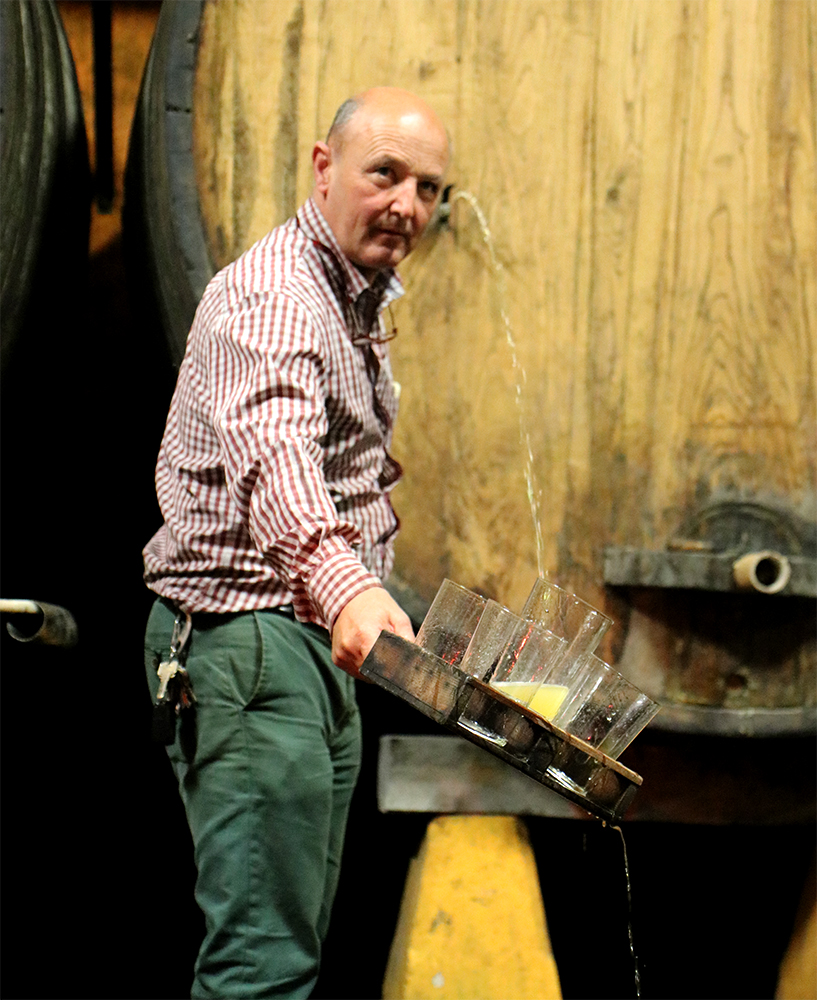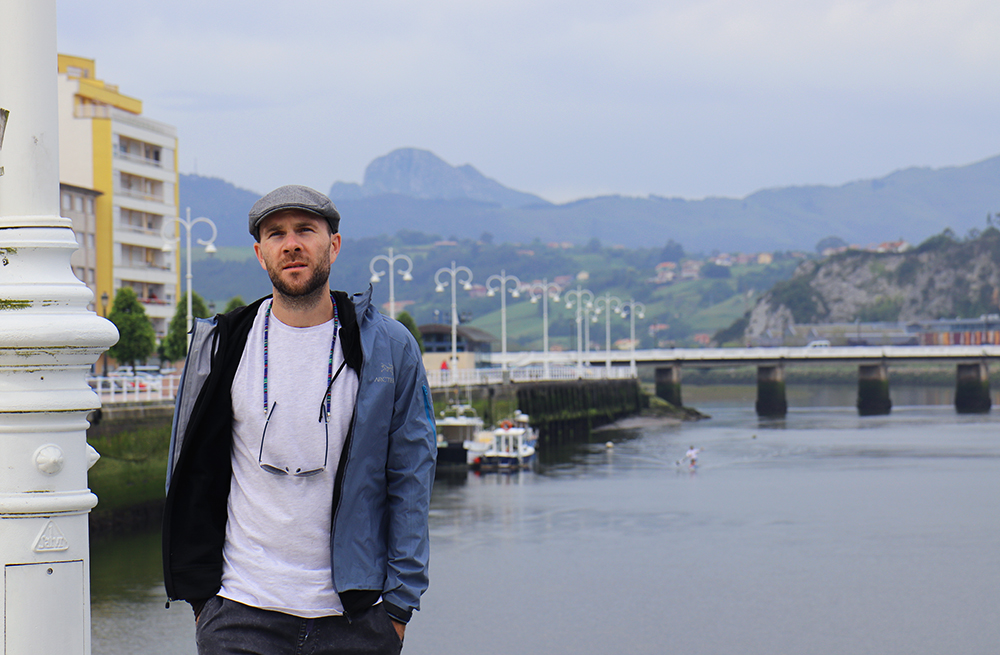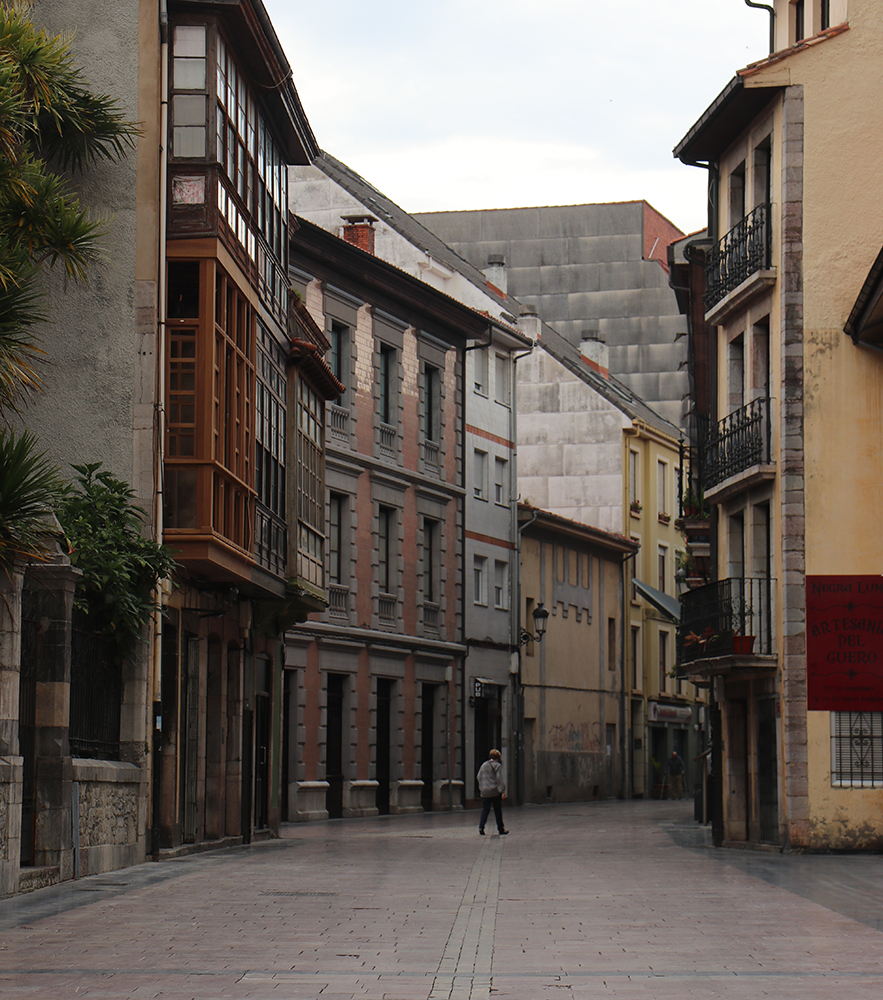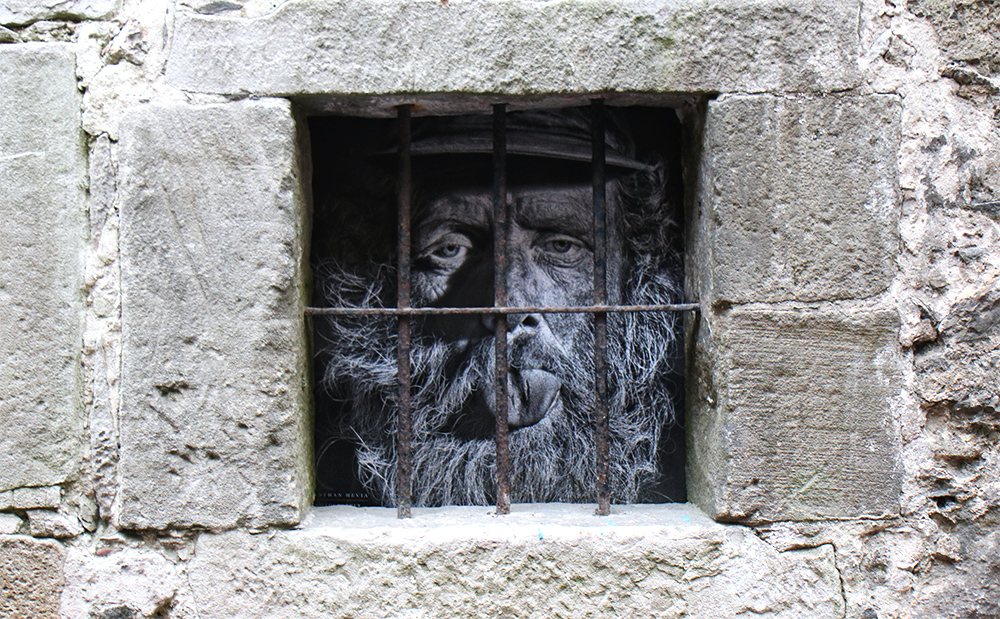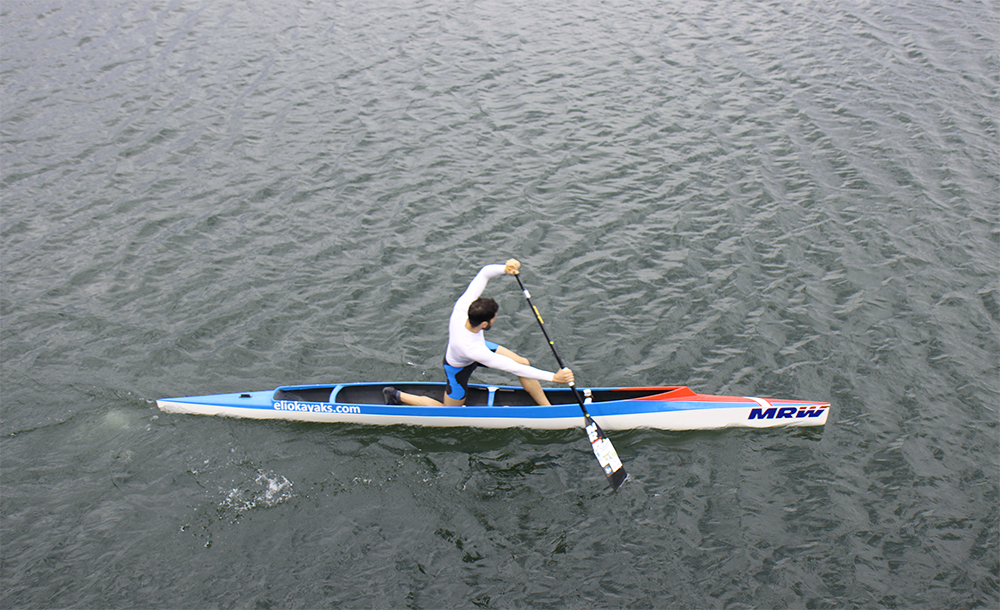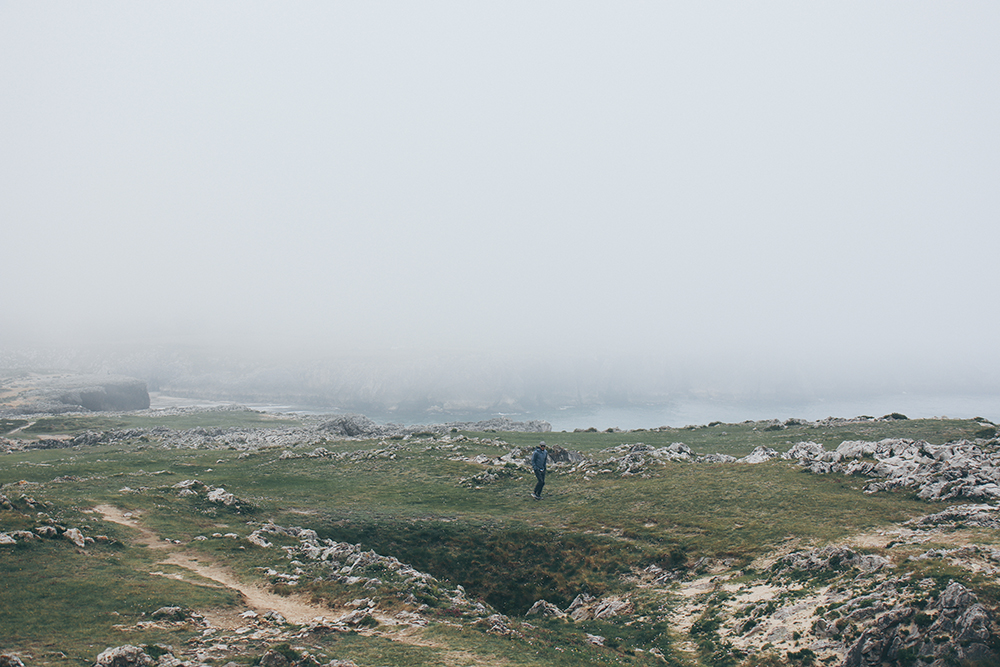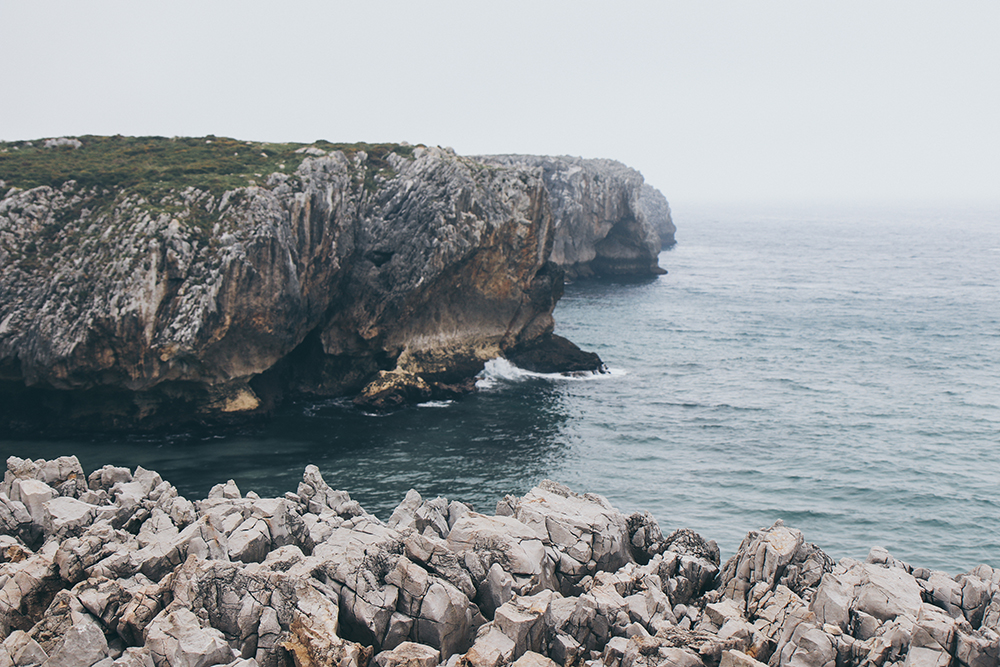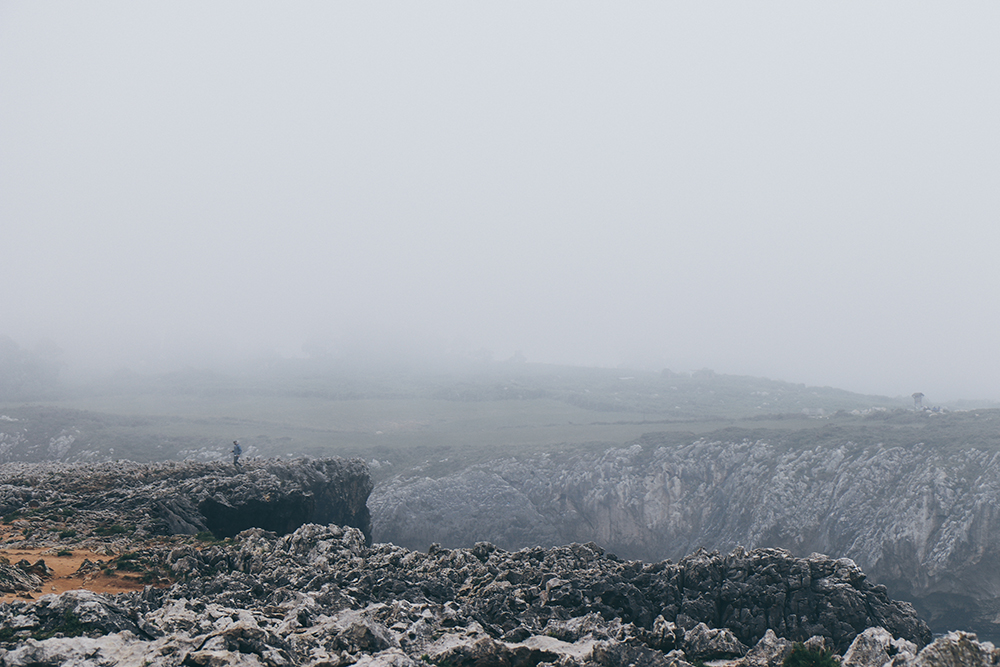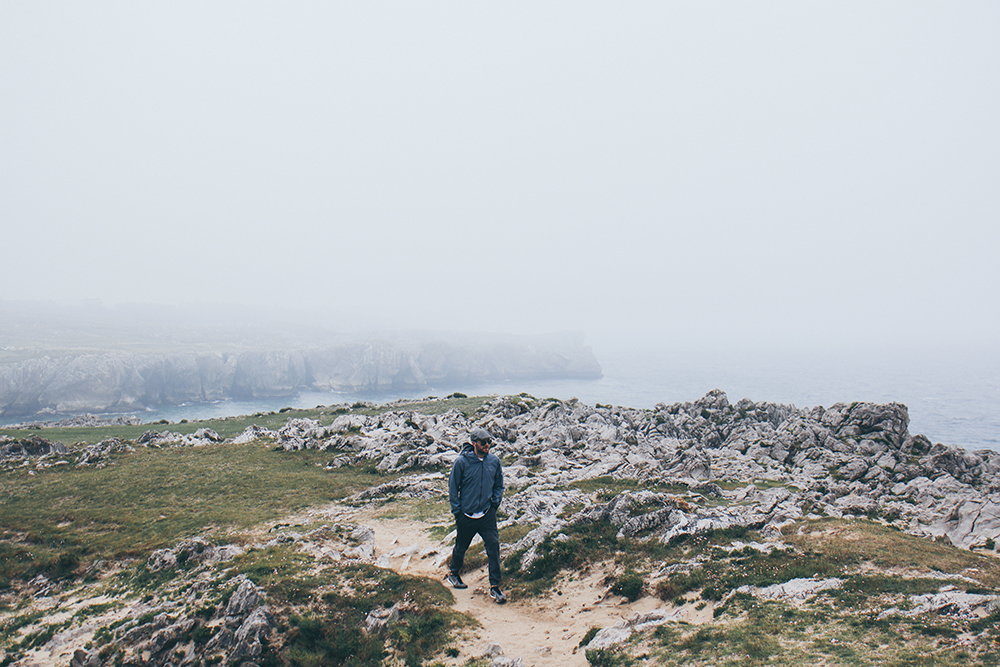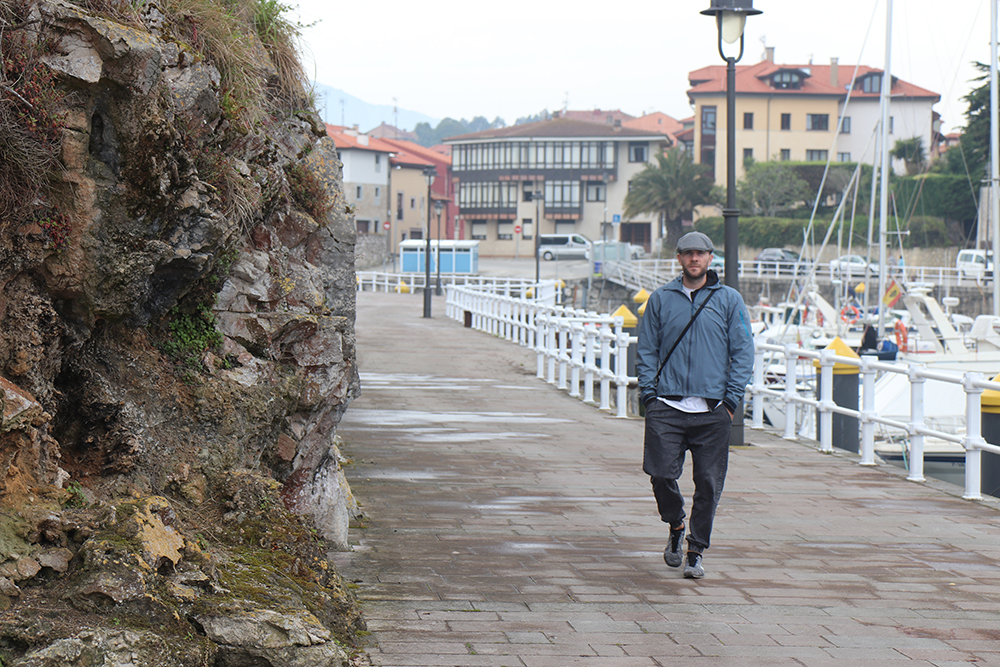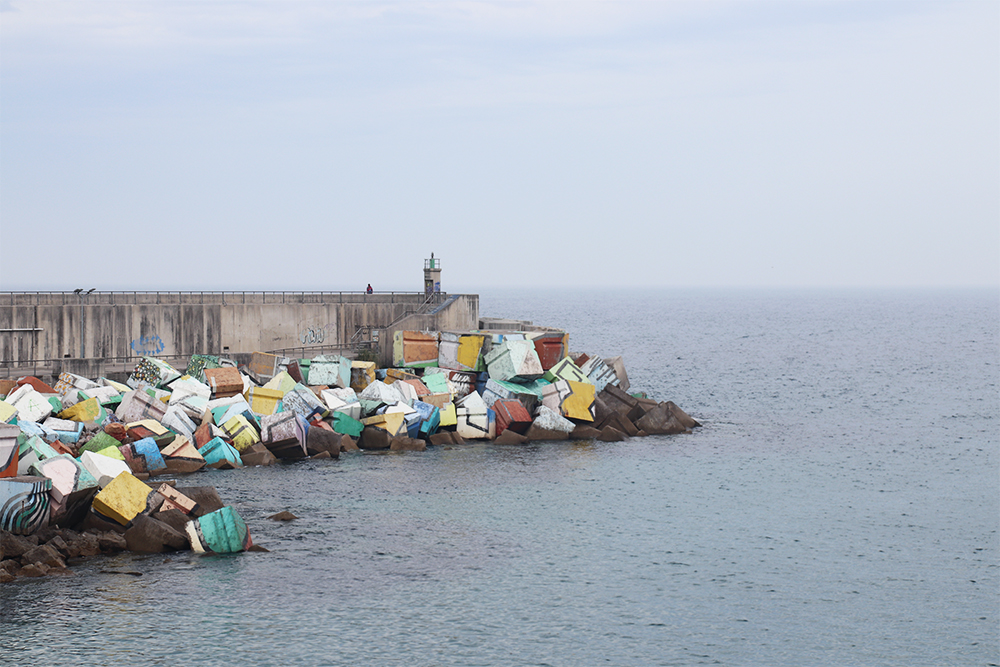After driving from Luarca to Gijón, we made our way through the coast of eastern Asturias. A beautiful route with American soul and indigenous influence from adventurous emigrants that long ago left their land looking for a better future in America and, triumphantly, brought their fortunes home.
Llastres
At Llastres’ highest point, the San Roque Lookout, we were spoiled with an impressive bird’s-eye view of the town, the sea, and the stunning Picos de Europa. We spent some time here taking it in before wandering down through Llastres’ steep, narrow streets. After innumerable staircases, we reached the marina, which is one of the most traditional and important ports in the area and a great place to enjoy Asturian cider or a menu del día.
For the latter, we strongly recommend El Escanu, a delicious restaurant with a patio overlooking the scenic beach it shares names with. Their pote asturiano, a traditional Asturian stew with beans, potatoes, greens and meat, was a trip favourite.
In our opinion, Llastres is an easily explored must visit for anyone traveling through Asturias.
With our batteries charged and our tummies full, we headed towards Ribadesella, one of the most popular places in Asturias, making a quick educational stop on the way. As new initiates to the world of Asturian cider, and since we were in the area of Colunga, famous for the quality of their apples, we felt it almost mandatory that we stop to learn more about the typical drink at one of the artisanal cider houses.
Our choice was Sidra Crespo, a small production winery (llagar in Asturian) with exquisite cider. Its owner Ignacio kindly showed us their facilities while explaining the traditional methods of production. The visit, which is completely free, included a demonstration of how to “espichar”, or pour, directly from the wooden barrels. The method of pouring over a great distance is quite dramatic, but adds to the flavour of the cider. And once poured, the cider is meant to be consumed quickly, preferably in one or two gulps. After abiding with a few tasters, Casey felt like certified experts of Austrian cider and were back on the road!
Ribadesella
After the no more than 20 kilometers between Llastres and Ribadesella, we arrived in a beautiful fishing village in the heart of eastern Asturias where the river Sella and the Cantabrian Sea come together. Here, we spent the rest of the afternoon strolling through its historic centre and along its beautiful beach.
This seafront village of about 6,000 inhabitants offers a variety of adventurous activities, such as horse horse riding, kayaking, surfing, hiking, and mountain biking, among many others. It is also known for the International Descent of the River Sella, one of the largest canoeing races of its kind in the world, an event held every year at the beginning of August.
We spent the night at Pensión Arbidel, a nice hotel in Ribadesella’s centre, 100 meters from town hall and 15 minutes walk from the beach of Santa Marina.
Llanes
Unfortunately the sea was relatively calm when we visited, so we didn’t have the full experience, but the enjoyable walk, beautiful views and impressive cliffs made it a worthwhile highlight regardless.
Next, we pointed the car towards Llanes, another picturesque fishing village. This one considered the coast of the Picos de Europa. Our first mission of the day here was to find another menú del día to cheer up our palats. And we could not have choosen a better one. Without a doubt, one of the best places we ate during our trip in Asturias was the Covadonga Restaurant located in the Street Manuel Cue in the center of Llanes. An authentic festival of flavors, from the fabes with almejas (beans with clams) to the hake in cider, that we would be happy to repeat.
Our afternoon was spent exploring the old town, which has the most palaces and emblazoned houses in Asturias, and its artistic port with the famous Cubes of Memory of Agustín Ibarrola. Before leaving, we also visited Toro Beach, known for its unique rocks and white sand.
In short, Asturias’ eastern coast offers a great balance between modernity and traditional culture, an exceptional natural environment, and delicious food.

